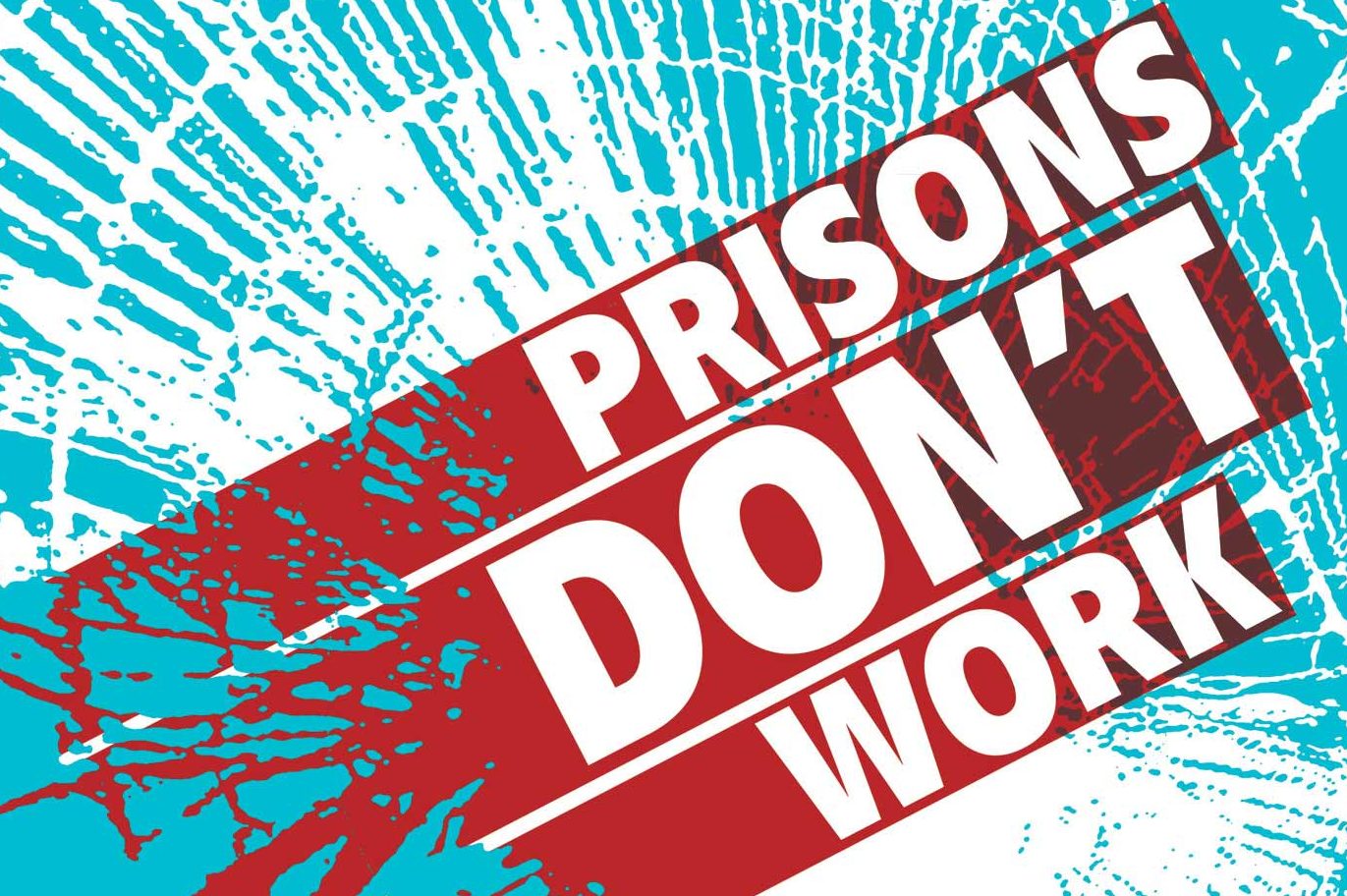Agency, an anarchist PR project, provides key talking points and a resource list for media on why anarchists support restorative justice and transformative justice practices
Why do anarchists advocate for restorative justice and transformative justice as alternatives to policing and prisons? Anarchists reject State authority in all its forms, including the criminal legal system. They believe in self-organization, autonomy, and finding ways to address social conflict and harmful behavior through restorative justice and transformative justice practices that emphasize individual and collective healing and accountability, rather than criminalizing and incarcerating people through a punitive system that perpetuates cycles of harm.
While the concepts of restorative justice and transformative justice and criticisms of policing and prison systems have gained visibility over the past few years, misconceptions of the terms are common, with many believing they equate to “no justice.” In fact, restorative and transformative frameworks seek to address the root causes of harm, and find meaningful ways to bring justice and peace to all involved, unlike the criminal legal system, which often only exacerbates the problems and trauma.
Additionally, there is little understanding of the anarchist perspective on restorative justice and transformative justice, even though advocating for alternatives to the criminal legal system is part of the historical tradition and ethical positions inherent in anarchist thought. The following brief seeks to provide a clear outline of what restorative justice and transformative justice are and how they relate to anarchism.
Why Anarchists Oppose State-Sanctioned Justice Systems:
- Anarchists believe in cooperation, not coercion. This is driven by a belief in personal freedom and collective responsibility. Anarchism is fundamentally anti-authoritarian and seeks to create a world where all people live free from domination and oppression.
- The criminal legal system necessitates coercion and violence to maintain control over populations. This allows the State to ignore the numerous factors—poverty, inequality, access to housing and healthcare, etc.—that may result in people engaging in harmful acts which require more complex, structural solutions than pointing a weapon at someone or locking them in a cage.
- The US has one of the highest incarceration rates in the world and holds the second largest number of incarcerated people with nearly 2 million living in prisons or jails(1). Part of the argument for this is that it will deter crime through punitive and retributive measures. Yet, even with the surge of mass incarceration since the 1970s, there is little evidence that harsh punishments and incarceration are effective at preventing crime.
- The design of the criminal legal system is incarceration and punishment, not rehabilitation, despite the fact that the vast majority of people who have been incarcerated will at some point rejoin society. People often come out of the prison system without the resources required to get back on their feet. They also reenter a society that deeply stigmatizes formerly incarcerated people who are likely to experience negative impacts on their physical and mental health as well as their financial stability. Imprisonment leads to lower incomes, difficulties obtaining work, food and housing insecurity—all of which increases the likelihood of someone returning to prison. Recidivism rates in the U.S. are some of the highest in the world; in a study across 34 states by the Justice Department, 46% of people released from incarceration in 2012 returned to prison within their first year out(2).
- The criminal legal system targets people of color, low-income communities, undocumented people, queer and trans people, and other marginalized populations. Black men are 6 times as likely to be incarcerated as white men, and Latinx / Hispanic men are 2.5 times as likely(3).
- Mass incarceration also harms the families and communities of those who are imprisoned. Children of incarcerated parents are more likely to struggle in school and experience mental and physical health challenges.
- Prisons are sites of extreme violence and control, resulting in trauma and continuing cycles of harm. Anarchists believe in prison abolition.
What is Restorative Justice and How Does it Relate to Anarchism and Abolition?
- Restorative justice is an alternative to traditional punitive and retributive legal processes, which prioritizes repairing harm and addressing conflict through mediation and communal restitution. Both victims and offenders are actively involved in the process, which aims to promote accountability and rehabilitation for wrongdoers and agency, empowerment, and healing for those who experienced the harm.
- Restorative justice is not a new idea, but a long tradition. It traces back to the values and practices of numerous Indigenous peoples, who have frequently found ways to create safe, healthy communities without relying on retribution.
- In many Indigenous cultures, justice is seen as a holistic process that involves the entire community. The focus is on healing the victim, repairing the harm, and restoring the relationships between individuals and the community as a whole. This approach is often grounded in principles of respect, responsibility, and interconnectedness. An example of this is Indigenous Peacemaking Circles, which build relationships, foster open dialog, address the deeper causes of conflict, empower participants and communities, provide a space to acknowledge responsibility, with the specifics of the process designed by those using it.
- What is an example of restorative justice?
- Restorative justice can take many forms, but often provides an opportunity for those who have been harmed to share the impact of the incident through in-person meetings or through letters. This creates a space for seeking answers to why the incident of harm happened, and helps the people impacted to not feel excluded from the process of achieving justice, or revictimized by the criminal legal system. The process is designed to center those impacted, including members of the community, and support healing for all involved.
- A restorative justice process is also designed to help the person responsible understand the impact they have had on others and encourage them to change their harmful behavior. This often involves a mediated, consensus process to decide what the person responsible can do to repair the harm from the incident.
- Is restorative justice a viable alternative to the carceral criminal legal system?
- Community organizers working on criminal legal system reform have long been advocating for utilization of restorative justice within the State-sanctioned criminal legal system as an alternative to prison. As of 2020, nearly every US state has officially adopted it in some form(4).
- Currently, opportunities for restorative justice often rely heavily on State involvement and administration. Sometimes restorative justice is even incorporated into State-imposed sentences as a process that occurs in addition to prison time.
What is Transformative Justice and Why Do Anarchists Support it?
- Transformative justice aims to address the underlying social and economic conditions that lead to wrongdoing, harm, conflict, and trauma while working to change social systems.
- Unlike restorative justice, transformative justice is explicitly practiced outside of the criminal legal system. While anarchists more frequently advocate for transformative justice, sometimes the involvement of the State is unavoidable and restorative justice can offer a more just way to navigate the criminal legal proceedings in these cases; in such situations, calls for restorative justice are more practical and the outcomes more achievable.
- What is an example of transformative justice?
- In incidents of violence or sexual assault, transformative justice advocates may work with both the people who experienced harm and those who caused harm, and also work with the broader community to prevent further incidents through education, resources, and progressive social support methods such as the Circle Process, also known as Peacemaking Circles, as referenced above.
- Creating community infrastructure can help to increase safety for the most vulnerable through active bystander intervention programs, safehouses for survivors, and policing alternatives that prioritize de-escalation and support through the engagement of mental health professionals and crisis support workers instead of armed officers who will often make a situation more violent and unstable.
Further Reading & Resources:
- Transform Harm: A Resource Hub for Ending Violence
Transform Harm provides extensive information, articles, curriculum, and more on restorative justice and transformative justice, community accountability, abolition, healing justice, and carceral feminism. - Creative Interventions Toolkit: A Practical Guide to Stop Interpersonal Violence
The Creative Interventions Toolkit is for anyone interested in carrying out a community-based intervention to violence. The Toolkit contains a basic model for violence intervention, useful information, worksheets, and stories based upon the experiences of the Creative Interventions team. - Why Me? What is Restorative Justice?
Why Me? is an organization working to improve access to restorative justice in England and Wales. Their FAQs, videos, and infographics provide highly accessible information about restorative justice. - Incite: Community Accountability
Published by Incite, this collection of resources outlines the why and how of community accountability practices, including restorative and transformative justice. - Teen Vogue: Transformative Justice, Explained
This article by Kim Tran features transformative justice practitioners and organizations and takes a look at the practical steps of engaging in transformative justice. - Abolition Journal: Revolution and Restorative Justice: An Anarchist Perspective
This article by Peter Kletsan looks at the potential shortcomings of restorative justice from an anarchist perspective, and explores the history of anarchist criminology. - Together We Lift the Sky: If You’re New to Abolition-Study Guide
Published in 2020 as a resource in solidarity with the groundswell of Black-led popular uprisings in response to the murders of George Floyd and Breonna Taylor, this guide is intended to be used for education and discussion in study groups over a 6 week period. This primer includes podcasts and multimedia and is designed for those new to the concept of police and prison abolition. - Alternatives to Police
In 2008, Rose City Copwatch published their research on work to support and build liberatory alternatives to the police. This work outlines both historical solutions and ongoing alternatives to police and policing. - Impact/Justice FAQ on Restorative Justice
A set of frequently asked questions provided by an organization active in restorative justice practice. Specifically, this outline broaches why practitioners seek to use more intentional language and thought processes when speaking about people who have caused harm. - Transformative Justice: a Brief Description
Written by Mia Mingus to provide a brief description for those who are not as familiar with the framework and orientation of transformative justice and who may not have the time or capacity to read a longer document.
References:
(1) https://www.statista.com/statistics/262961/countries-with-the-most-prisoners/; https://www.sentencingproject.org/reports/mass-incarceration-trends/
(3) https://www.sentencingproject.org/reports/mass-incarceration-trends/
(4) https://papers.ssrn.com/sol3/papers.cfm?abstract_id=3761531; https://www.vox.com/22979070/restorative-justice-forgiveness-limits-promise


